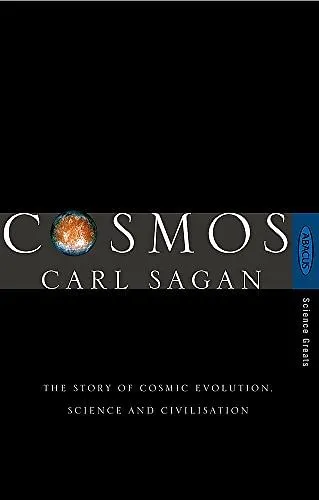Ten or twenty billion years ago, something happened—the Big Bang, the event that began our universe. Why it happened is the greatest mystery we know. That it happened is reasonably clear.
All the matter and energy now in the universe was concentrated at extremely high density—a kind of cosmic egg, reminiscent of the creation myths of many cultures—perhaps into a mathematical point with no dimensions at all.
It was not that all the matter and energy were squeezed into a minor corner of the present universe; rather, the entire universe, matter and energy and the space they fill, occupied a very small volume. There was not much room for events to happen in.
In that titanic cosmic explosion, the universe began an expansion which has never ceased. It is misleading to describe the expansion of the universe as a sort of distending bubble viewed from the outside. By definition, nothing we can ever know about was outside.
It is better to think of it from the inside, perhaps with grid lines—imagined to adhere to the moving fabric of space—expanding uniformly in all directions. As space stretched, the matter and energy in the universe expanded with it and rapidly cooled.
The radiation of the cosmic fireball, which, then as now, filled the universe, moved through the spectrum—from gamma rays to X-rays to ultraviolet light; through the rainbow colors of the visible spectrum; into the infrared and radio regions.
The remnants of that fireball, the cosmic background radiation, emanating from all parts of the sky can be detected by radio telescopes today. In the early universe, space was brilliantly illuminated. As time passed, the fabric of space continued to expand, the radiation cooled and, in ordinary visible light, for the first time space became dark, as it is today.
The early universe was filled with radiation and a plenum of matter, originally hydrogen and helium, formed from elementary particles in the dense primeval fireball. There was very little to see, if there had been anyone around to do the seeing.
Then little pockets of gas, small nonuniformities, began to grow. Tendrils of vast gossamer gas clouds formed, colonies of great lumbering, slowly spinning things, steadily brightening, each a kind of beast eventually to contain a hundred billion shining points. The largest recognizable structures in the universe had formed. We see them today. We ourselves inhabit some lost corner of one. We call them galaxies.
About a billion years after the Big Bang, the distribution of matter in the universe had become a little lumpy, perhaps because the Big Bang itself had not been perfectly uniform. Matter was more densely compacted in these lumps than elsewhere.
Their gravity drew to them substantial quantities of nearby gas, growing clouds of hydrogen and helium that were destined to become clusters of galaxies. A very small initial nonuniformity suffices to produce substantial condensations of matter later on.
As the gravitational collapse continued, the primordial galaxies spun increasingly faster, because of the conservation of angular momentum. Some flattened, squashing themselves along the axis of rotation where gravity is not balanced by centrifugal force.
These became the first spiral galaxies, great rotating pinwheels of matter in open space. Other protogalaxies with weaker gravity or less initial rotation flattened very little and became the first elliptical galaxies.
There are similar galaxies, as if stamped from the same mold, all over the Cosmos because these simple laws of nature—gravity and the conservation of angular momentum—are the same all over the universe. The physics that works for falling bodies and pirouetting ice skaters down here in the microcosm of the Earth makes galaxies up there in the macrocosm of the universe.
Within the nascent galaxies, much smaller clouds were also experiencing gravitational collapse; interior temperatures became very high, thermonuclear reactions were initiated, and the first stars turned on.
The hot, massive young stars evolved rapidly, profligates carelessly spending their capital of hydrogen fuel, soon ending their lives in brilliant supernova explosions, returning thermonuclear ash—helium, carbon, oxygen and heavier elements—to the interstellar gas for subsequent generations of star formation.
Supernova explosions of massive early stars produced successive overlapping shock waves in the adjacent gas, compressing the intergalactic medium and accelerating the generation of clusters of galaxies. Gravity is opportunistic, amplifying even small condensations of matter.
Supernova shock waves may have contributed to accretions of matter at every scale. The epic of cosmic evolution had begun, a hierarchy in the condensation of matter from the gas of the Big Bang—clusters of galaxies, galaxies, stars, planets, and, eventually, life and an intelligence able to understand a little of the elegant process responsible for its origin.
Excerpt From: Carl Sagan. “Cosmos.”







